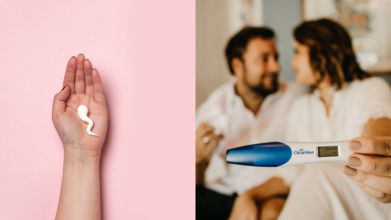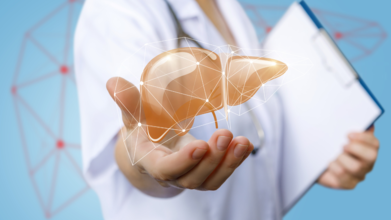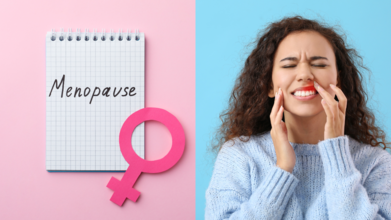- Health Conditions A-Z
- Health & Wellness
- Nutrition
- Fitness
- Health News
- Ayurveda
- Videos
- Medicine A-Z
- Parenting
- Web Stories
This Subtle Change in Your Fingernails Could Be a Warning Sign of a Rare, Life-Threatening Heart Infection

When it comes to heart problems, most of us think of chest pain, shortness of breath, or maybe even dizzy spells. What we don’t expect is to spot a warning sign right on our fingernails. But that’s exactly where a subtle symptom of a rare, potentially fatal heart condition might first appear.
The Nail Clue You Shouldn’t Ignore
If you’ve noticed odd reddish-brown streaks running vertically underneath your nails and you’re sure you didn’t recently slam your finger in a door, it might be time to look beyond nail trauma. These tiny lines, known as splinter haemorrhages, could be pointing to a much more serious problem: endocarditis.
According to the British Heart Foundation (BHF), endocarditis is a rare infection affecting the inner lining of the heart and its valves, diagnosed in around 1,500 people in the UK each year. While rare, the condition can be deadly if not caught early.
What Exactly Is Endocarditis?
Endocarditis typically occurs when bacteria enter the bloodstream and latch onto damaged areas within the heart. This can cause inflammation, leading to permanent damage or even heart failure if untreated. Symptoms can mimic more benign ailments like the flu and may come on gradually over weeks or even months, making diagnosis tricky.
That’s where subtle signs like splinter haemorrhages can be so crucial. These streaks form when tiny blood clots damage the capillaries under your nails. While they can occur from physical trauma or be linked to conditions like diabetes or certain medications (aspirin being one of them), multiple streaks across several nails without a clear cause deserve medical attention.
Other Visual Clues Your Body Might Be Giving You
Your fingernails aren’t the only place endocarditis can leave clues. The BHF lists several visible signs to be aware of, including:
- Small, dark-coloured spots on your skin
- Painful red lumps on fingers or toes
- Unusually pale skin
These signs might be mistaken for skin conditions or general fatigue, but when paired with symptoms like fever, chills, or unexplained weight loss, they could signal something much more serious.
When Flu-like Symptoms Aren’t Just the Flu
One of the biggest challenges with endocarditis is that many of its symptoms feel deceptively ordinary. Feeling tired? Slight fever? Muscle aches? You might blame the seasonal bug. But if these symptoms linger or worsen, especially when paired with the nail changes or skin signs mentioned above, don’t brush it off.
Infective endocarditis can be fatal if left untreated, the BHF warns. Therefore, early detection and prompt management are critically important. You should contact your healthcare provider as soon as possible if you recognise the above symptoms.
How It's Treated and Why Time Matters
Caught early, endocarditis is often treatable with a course of strong antibiotics and regular monitoring by a GP. Blood tests help identify the infection, and treatment can begin swiftly.
In more severe cases, where the heart is already damaged or abscesses have formed, surgery may be necessary. Left unchecked, endocarditis can lead to complications like heart failure or an increased risk of stroke.
Who’s More at Risk?
While endocarditis can affect anyone, some people are at higher risk. This includes those with:
- Heart valve disease
- Artificial heart valves
- A history of endocarditis
- Congenital heart defects
- Hypertrophic cardiomyopathy
- A history of injecting drugs
Prevention Starts with the Basics
A few daily habits can significantly reduce your risk. Maintaining good personal hygiene, especially oral and hand hygiene, is key. Bacteria often enter the bloodstream through cuts in the gums or skin, so brushing, flossing, and washing hands thoroughly really do matter.
When in Doubt, Get It Checked Out
Ultimately, your body often whispers before it screams. A streak on your nail might seem harmless, but in the context of endocarditis, it’s a quiet clue you shouldn’t ignore. If something feels off and especially if several of these subtle signs start showing up together, a check-up could be life-saving.
Male Fertility: How Moving More and Being Involved Makes All the Difference

When we talk about fertility, conversations usually revolve around ovulation trackers, hormonal injections, and what women should or shouldn’t be doing. But this lopsided approach is clinically outdated. Male factors contribute to nearly 50% of all infertility cases. Yet, most consultations still focus solely on the female partner, often reducing men to the role of sperm donors with zero follow-up. Men have hormones, stress, and lifestyle risks too.
Why Fitness Isn’t Just About Abs: It's About Sperm
“Moderate, regular physical activity can significantly improve male reproductive health,” says Dr Kanchi. And no, that doesn’t mean training for a triathlon. It means adding just enough movement to boost hormone balance, sperm quality, and even mental health. According to her, gentle workouts can improve testosterone levels, sperm motility and concentration, and lower the stress hormone cortisol. Basically, fitness isn’t just about getting beach-ready; it’s about getting baby-ready.
Testosterone, Tight Shorts, and Other Cautionary Tales
Before you go signing up for a 6-day bootcamp, Dr Kanchi does drop some caution. “Excessive or intense training, especially endurance activities like long-distance running or heavy bodybuilding, can negatively impact male fertility,” she warns. Why? Testicular overheating, spiked cortisol, and suppressed testosterone. Also, tight athletic wear during long bike rides should be avoided.
Balance is the fix. Not burnout. Dr Kanchi recommends walking, yoga, swimming, bodyweight training, and light resistance workouts. Cycling? Okay in moderation, with padded shorts and plenty of breaks.
Make Way for the Fertility-Friendly Workout Routine
If you’re building a fertility-first fitness plan, Dr Kanchi has a checklist:
- Consistency over intensity: Aim for 150 minutes a week. That’s 30 minutes, five days. Easy.
- Keep workouts under an hour: No one’s asking for Ironman-level endurance.
- Cool it: Literally. Skip saunas, tight spandex, and boiling hot pools.
- Hydrate like it’s your job: Dehydration messes with energy and ejaculate.
- Prioritise rest days: Your sperm need their beauty sleep too.
- Pair movement with diet: Think antioxidants, lean protein, and fewer biscuits.
- IVF and the Fitness Balance Beam
Dr Kanchi says that physical activity still plays a role even during IVF, but it needs to be gentle and strategic. “Avoid high-impact sports or heavy lifting during sperm collection phases,” she says. Focus on relaxation, emotional wellness, and stress management instead. If possible, rope in a fertility-aware trainer or physiotherapist.
Why Fertility Isn’t Just Physical; It’s Mental Too
Trying to conceive, especially via IVF, can feel like an emotional obstacle course. Men are often told to ‘stay strong’ while bottling up anxiety, helplessness, and grief. “Physical activity becomes not just a fitness tool but a mental health lifeline,” says Dr Kanchi. Even a walk or 20-minute yoga session can reduce depression, boost motivation, and bring back a sense of control.
Fertility Isn't Just a Woman's Matter
For Dr Bhavna Banga, Director of Infertility at Cloudnine Group of Hospitals, it is clear: “Fertility care should not be a solo act.” She believes it's time to give men equal space in the fertility room along with access to emotional support, advanced diagnostics, and transparent treatment discussions. Why? Because unexplored male issues like sperm DNA fragmentation or hormonal imbalances could be the missing link in repeated IVF failures.
“Couples who walk this path together, emotionally and medically, emerge more connected, more informed, and better prepared,” she says.
Dr Kanchi says, “Just move consistently, mindfully, and with your long-term health in mind.” And Dr Banga? She wants every man to feel like an equal part of the fertility equation. Because when both partners are equally heard, involved, and supported, fertility care becomes more hopeful for everyone.
5 Surprisingly Easy Things You Can Do Daily to Start Reversing Fatty Liver

Did you know? Your liver is the ultimate multitasker. It filters your blood, metabolises fats, breaks down toxins, and basically moonlights as a full-time cleaner, chef, and security guard. But chuck in too much processed food, sugar, and Netflix-induced couch time, and even this organ can get furious.
Non-alcoholic fatty liver disease (NAFLD) is what happens when excess fat builds up in your liver cells and you don’t need to drink alcohol to get it. But it’s often reversible. You don’t need fancy supplements, bootcamp workouts, or a personal chef to start turning things around.
Here are five simple yet genuinely effective things you can do at home every single day to help reverse fatty liver.
1. Start Your Day With a Glass of Warm Lemon Water
Lemons contain vitamin C and antioxidants that support liver detoxification. Starting your morning with warm lemon water, without sugar, gently nudges your digestion awake and encourages bile production. Also, swapping your usual sugary morning beverage for lemon water cuts out unnecessary calories, which is crucial since weight loss can drastically improve liver health.
2. Go for a 10-Minute Walk
You don’t need a 90-minute sweat-fest to make your liver happy. Studies show that even short bursts of movement can help reduce liver fat. A brisk 10-minute walk after meals, walking your dog outside before it hits the bed, or even pacing during phone calls counts. Your liver loves movement because it helps regulate blood sugar, burn fat, and reduce insulin resistance, all of which are major players in fatty liver.
3. Eat Something That Looks Like It Was Grown, Not Made
Your liver thrives on whole foods, especially ones high in fibre and antioxidants. Eat greens, berries, beans, lentils, and cruciferous veg like broccoli or cabbage. Aim to have at least one rainbow-coloured meal a day. The brighter your plate, the more likely it is to contain the nutrients your liver needs to flush out fat and function smoothly.
4. Say No to Sugar
We all know how much the wellness world dreads sugar, but cutting it out completely feels tough. So just swap one sugary thing a day for a smarter option. Choose fruit over juice. Greek yoghurt over ice cream. A handful of nuts over a biscuit binge. Even modest reductions in sugar can significantly lower liver fat levels. Sugar, especially fructose, is a known liver enemy. It converts to fat quickly and makes your liver feel like it's drowning in syrup.
5. Sleep Like It’s Your Job
Deep, quality sleep is one of the most underrated tools in liver health. Poor sleep disrupts hormones, increases cravings for junk, and worsens insulin resistance, all of which can accelerate fatty liver. Aim for 7–9 hours of uninterrupted sleep and try sticking to a regular bedtime, even on weekends. Put your phone on aeroplane mode, dim the lights, and create a pre-bed ritual that doesn't involve doomscrolling or late-night cheese toasties.
Reversing fatty liver doesn’t have to mean massive lifestyle overhauls. It’s about making consistent, doable tweaks that your body can actually stick with. Drink the lemon water. Walk a little. Eat real food. Ditch some sugar. Get that sleep.
Think Menopause Is All About Mood Swings and Hot Flushes? Your Bleeding Gums Might Tell a Different Story

When 49-year-old Angela Cook from Banbury started feeling sharp, throbbing pain in her gums, menopause was the last thing on her mind. A psychologist by profession, Angela found herself suddenly unable to get through her daily meals without discomfort. Her dentist suggested age could be the cause, but the real answer came unexpectedly through a radio segment. As she listened to someone discuss how menopause affects oral health, it clicked. Her gum pain wasn’t random; it was hormonal.
This little-known link between menopause and dental health is quietly catching many women off guard. The pain was unbearable, especially around her molars.
While Angela had been grappling with hot flushes and mood swings since her mid-forties, she hadn’t connected the dots. But hormonal shifts, particularly a dip in oestrogen, can wreak havoc far beyond what’s discussed in mainstream menopause conversations. Oestrogen plays a critical role in maintaining gum tissue and bone density; when levels fall, gums may become inflamed, bleed easily, and turn hypersensitive.
“....It wasn't until she accidentally caught a radio conversation about menopause affecting gum health that she had an epiphany – she was experiencing it," Express UK reported.
The Mouth Isn’t Exempt from Menopause
Despite menopause affecting half the population, oral health is rarely part of the public discourse. According to the NHS, fluctuating hormone levels can alter blood supply to gum tissue, making them more susceptible to disease. Dry mouth, burning sensations, and altered taste are also common complaints. Yet few women or even dentists routinely connect the dots.
Gums can respond just like skin to hormonal fluctuations, becoming more reactive and prone to inflammation. And unlike wrinkles or weight gain, gum issues are easier to dismiss or misattribute to poor dental hygiene.
Angela’s experience is far from isolated. A 2024 survey by CanesMeno found that more than half of menopausal women felt unprepared for what was to come, while nearly 48 per cent believed the general public needed better education about menopause. Perhaps more tellingly, a fifth of women still consider the topic taboo, and many avoid discussing their symptoms entirely.
Chewing on Solutions
In Angela’s case, what worked wasn’t a fancy dental treatment or prescription meds. It was something she stumbled upon online: gum massage.
She started gently rubbing underneath each tooth after flossing, once a day. She saw a difference immediately. She still gets the odd ache, but nowhere near what it was. It’s manageable.
Gum massage increases blood flow to the tissues and may help reduce inflammation, especially when combined with good oral hygiene. While it may not be a silver bullet for everyone, it’s a simple, low-cost strategy that made a tangible difference for Angela.
That said, if gum pain or bleeding becomes persistent, it’s crucial to consult a dentist to rule out periodontal disease, which can worsen with menopause but may require more intensive treatment.
Why the Silence?
Why are so many women in the dark about this? Partly because menopause education remains patchy and inconsistent. The CanesMeno survey highlighted that 35 per cent of women wished they’d learnt about it during their school or college years. There’s also the issue of fragmented healthcare. A GP might address hormonal concerns, while a dentist looks at your mouth; rarely do the two cross over.
Angela's story is a compelling reminder that menopause doesn't just mess with moods and body temperature; it can mess with your mouth too.
Time to Widen the Menopause Conversation
There’s a growing push for more holistic menopause care, one that includes gum health, joint pain, insomnia, and mental health, not just the headline symptoms. From workplaces to schools to healthcare settings, education needs to go beyond clichés and start equipping women with the full picture.
In an age where menopause is finally starting to get its due airtime, perhaps it’s time we listen to what women’s gums have been trying to say all along.
© 2024 Bennett, Coleman & Company Limited

